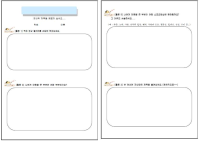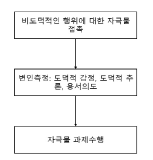
Purpose Drawing on Socioemotional Selectivity Theory, the present research aims to investigate how sport consumers’ moral reasoning strategies and forgiveness intent toward a sport organization’s misconduct depending on the consumers’ different time perspectives(expansive vs. limited). Methods An experimental study (total n = 129; Baby Boomer generation = 62, generation MZ = 67) was conducted by utilizing a fictitious scenario depicting a sport organization’s misconduct. The proposed hypotheses were tested by conducting T-test, correction analysis, and multiple regression analysis using SPSS 21.0. Results There were significant differences in moral reasoning and forgiveness based on different time perspective. Baby Boomer(MZ) group showed higher(lower) levels of moral rationalization, moral decoupling, and intent of forgiveness compared to MZ(Baby Bommer) group, while showing lower(higher) level of moral coupling. A result also revealed that negative moral emotions had moderating effect between a limited time perspective and moral coupling among MZ participants. Conclusion The results of this study indicated that sport consumers’ time perspective has a predictive function on moral reasoning strategies. Thus, it is necessary for sport organizations to establish strategies focusing on the consumers’ time perspective to effectively respond to an unexpected crisis.


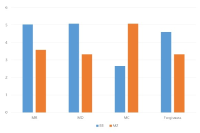
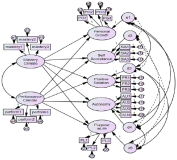
Purpose This study identified the influence of perceived motivational climate on psychological well-being in ballet majors. Methods Participants were 211(male=25, female=186) collegiate students enrolled in ballet department. Measures were The Perceived Motivational Climate in Sport Questionnaire(PMCSQ) and Psychological Well-being Questionnaire. Data were analyzed by using descriptive statistics, reliability test, correlation, and structural equation modeling. Results Results were as follows. First, mastery climate who ballet majors perceive significantly influenced on the five subscales of their psychological well-being: Mastery climate was positively related to personal growth, self-acceptance, positive relation with others, autonomy, and purpose in life. Second, performance climate who ballet majors perceive significantly influenced on the five subscales of their psychological well-being: Performance climate was negatively related to personal growth, self-acceptance, positive relation with others, autonomy, and purpose in life. Model fit indices were acceptable(RMSEA=.070). Conclusion In conclusion, this study indicated that motivational climate who ballet majors perceive was a important situational factor on their psychological well-being.

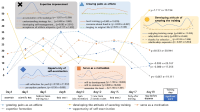
Purpose The current study aimed to identify national youth cyclist`s experience and change tendency of experience during camp training. Methods A total of 35 cyclists who participated in 2017 Korea youth national cycling camp training provided the data. The survey was conducted 9 times during the 20 days of camp training using open-ended questionnaire by diary method. The collected data were analyzed based on inductive categorization and response rates. This study was conducted in the order of formation rapport, data collection, and data analysis. Results Youth cyclists experiences during camp training to growing pains as an athlete, developing the attitude of savoring training, serve as a motivation, expertise formation and opportunity of self-examination. Based on the change in response frequency of the survey data, camp training experience falls into two categories: variable and invariable. Conclusions Youth national cyclist were growing their growth power through various experiences during the training camp, and these experiences changed to specific inflection points from the beginning to the end of the camp. Understanding changes in psychological experience can provide the design of timely psychological support and coaching method. This study will be used as a material for the design of the camp training program for the youth cyclist, as well as an opportunity to increase the interest of continuity reflection on the psychological experience.

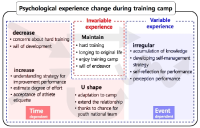
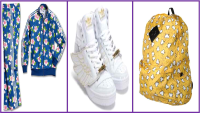
[Purpose] The present research aims to provide fundamental material required for establishing effective marketing strategies by analyzing purchasing experience of sports and art collaboration products and the determinants of purchasing intention. [Methods] Total of 370 survey questionnaires were distributed to undergraduate and graduate students in Seoul and Gyeonggi area and 331 questionnaires were analyzed as the final valid samples. For the data analysis, SPSS 18.0 version was used for frequency analysis, descriptive statistics analysis, exploratory factor analysis, reliability analysis, cross analysis, and logistics regression analysis. [Results] The study results are as follows. First, as a result of cross analysis on general characteristics, there was significant difference in age, monthly income and allowance, number of average purchases, considerations and major. Second, as a result of cross analysis on purchasing intention, there was significant difference in gender, monthly income and allowance, number of average purchases, considerations and major. Third, as a result of analyzing determinants of purchasing intention, there was significant difference in monthly income and allowance, number of average purchases, and sincerity. Fourth, as a result of analyzing determinants of purchasing intention, there was significant difference in gender, number of average purchases, considerations, major, creativity, aesthetics, interest and tenacity.

Purpose This study examines the regional differences in fall-related physical fitness and fall experience characteristics between Korean and Japanese elderly people. Methods The study includes 176 elderly residents of Gifu(35 male, 73.5yrs; 141 female, 72.4yrs) and 147 residents of Ulsan(46 male, 75.6yrs; 101 female, 75.6yrs). One-legged stance, hand grip strength, knee extension strength, 10 m gait, timed up and go test, 30-s chair stand, sit and reach, and reaction time were measured to examine the fall-related physical fitness. A questionnaire survey was also conducted to investigate the characteristics of the fall experiences. Results The elderly in Ulsan experienced a lot of falls compared to those in Gifu. Many of the fallers in Ulsan have fallen forward due to tripping, and they have often fallen backwards by losing balance. In addition, 14% of them suffered a bone fractured. The one-legged stance, hand grip strength, 10m gait, timed up and go, 30-s chair stand, and reaction time of the elderly in Gifu were superior to those in Ulsan. Conclusion In order to reduce the fall rate through improvements to fall related physical fitness and the awareness of fall prevention, various professional fall prevention programs and policies should be proposed, and they should be implemented systematically for community living elderly people.

Purpose This study was to investigate the systematic application of the life skills program and its effects in a sport setting. Methods Participants were 14 college students(8 males and 6 females) majoring in Taekwondo. Survey tools were utilized to measure items of life skills and journals. Data analyses were conducted by using Excel program and inductive content analysis. Results First, life skills in this study consisted of goal setting, self-talk, imagery, cognitive restructuring. Life skills program has undergone a procedure, such as the introduction, training, development, application, and evaluation. Second, the average scores of life skill variables have been changed according to measured points. Specifically, the average scores of goal setting and self-talk were highly increased over time and the average score of imagery indicated gradual rising line. The average score of negative thought was slightly reduced over time. Third, regarding effects of this program, participants’ responses were categorized into six components; performance enhancement, positive thoughts, chances of change, goal setting, struggling efforts, and motivation formation. Further, participants stated this program was a great opportunity to develop these components. Conclusion The application of life skills program in sport settings will contribute to participants’ life span developmental change in cognitions, emotions, and behavior.


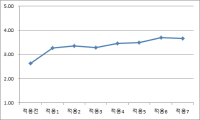

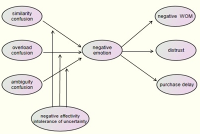
Purpose The purpose of this study was to identify how the three variables of consumer confusion proneness affect consumers' negative emotion, word of mouth, trust and decision postponement during the process of purchasing golf club. Futhermore, this study looked through the moderating effect of the personal characteristics in the relation between consumer confusion proneness and negative emotion. Method A total of 850 questionnaires were used for data analyses(i.e., frequency analysis, confirmatory factor analysis, structural equation modeling) with PASW 18.0 and AMOS 18.0. The results of the study are as follow. Results First, all of the subordinate factors of consumer confusion proneness had a significant effect on the consumer's negative emotion. Second, consumer's negative emotion had a significant effect on negative WOM. Third, consumer's negative emotion had no significant effect on distrust. Fourth, consumer's negative emotion had a significant effect on decision postponement. Fifth, the moderating role of negative effectivity partially had a significant influence in a relation ship between confusion proneness and negative emotion. Sixth, the moderating role of intolerance of uncertainty had a significant influence in a relation ship between confusion proneness and negative emotion. Conclusion The results of this study contributed to provide fundamental information on over all golf industry as in service providing point of view as well as development and application relate to it.


Purpose The purpose of this study was to examine the effects of temporal and spatial distance and types of advertising messages on sport consumer’s attitudes toward and advertising and purchase intentions, based on the construal level theory. Methods Toward this end, 253 usable data were conducted using frequency analysis, exploratory factor analysis, reliability analysis, correlation analysis, MANOVA, and ANOVA with SPSS 24.0. Results and Conclusion The study obtained the conclusion that when using different types of messages, the consumer’s attitudes and purchase intentions are influenced by temporal distance, by spatial distance, and by the interaction between both factors.

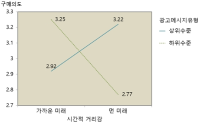


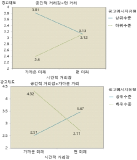




Purpose The purpose of this study was to investigate the factor that influence the using behavior of online sport media by university students applying Unified theory of acceptance and use of technology 2(UTAUT 2). Methods The study performed a research survey using convenient sampling method. The sample was 235 university students who had experience with online sport media. The data were analyzed through frequency analysis, reliability analysis, correlation analysis, confirmatory factor analysis, and structural equation model using SPSS Windows ver . 20.0 and AMOS 20.0. Results The results showed that, firstly, performance expectancy and effort expectancy had a positive effect on intention to use, however, no significant influence on social effect on intention to use. Secondly, facilitating condition had positive effect on usage behavior. Thirdly, hedonic motivation had positive effect on intention to use. Fourthly, Habit had positive effect on the intention to use and usage behavior. Lastly, intention to use had positive effect on usage behavior. Conclusion Based on the conclusion of this study, online sports media companies should provide useful and convenient viewing experience by providing personalized services, and should apply various attraction strategies to habitually use sports online media.


Researchers and teachers in physical education have emphasized sportsmenship in sport education setting. However, how to teach sportsmenship in physical education is not proposed yet. The purpose of this study was (1) to develop an instructional program for teaching and learning sportsmanship and (2) to examine its effects on sportsmenship. Participants were 7th middle school students(N=95). Data were collected using Sportsmanship Test(Park, 2014), open-ended questionnaire and in-depth interviews with students. The data were analyzed through paired samples t-test and qualitative content analysis. Results showed that significant difference was observed in students' sportsmanship test scores after instruction. Analysis of interview data showed that students experience the value of utmost effort, respect for opponents, respect for teammates, acknowledging results, respect for judgment, and valuable lessons related to character education. Implications for sportsmanship education using instructional program were discussed.


